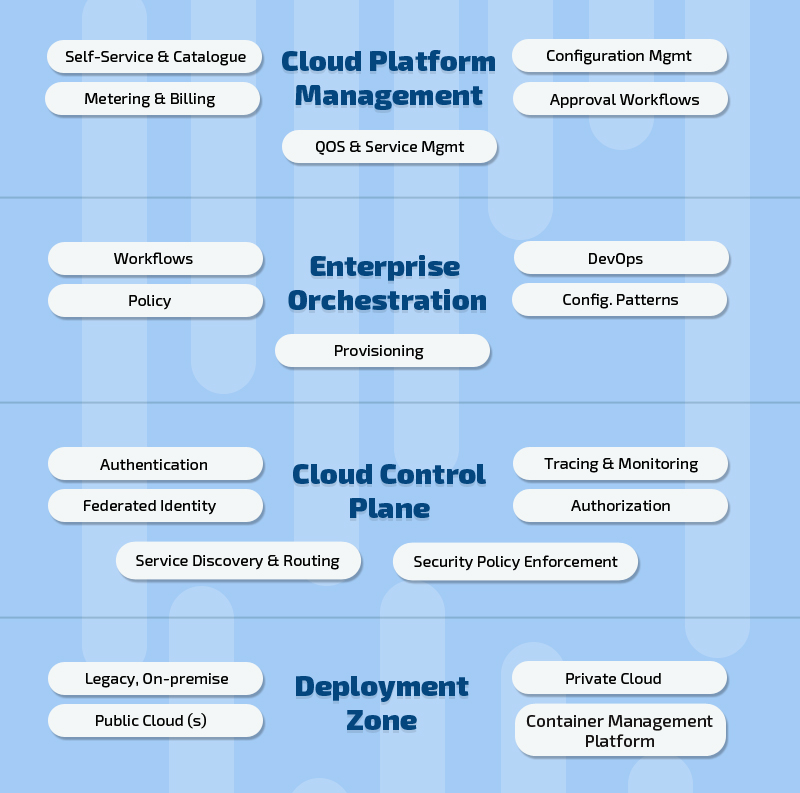The IT Industry is witnessing a high rate of advancement, and cloud transformation is one of the main factors that affects the whole process. It’s what changes the way infrastructure and platforms are being built. The common method is to implement the ITSM process, which is: “An end user’s infrastructure request goes through budgeting, an approval process, and a long provisioning time. It might also consider procurement time to simplify the provisional model that is driven by the enterprises.”
The dynamic cloud environment is a self-service model that requires no support from the infrastructure and platform teams while provisioning, but the responsibilities of the platform including resiliency (the capacity to recover quickly from difficulties), security, cost control, and compliance remain with the platform teams. Therefore, this makes the product/people-centric process, a self-service-based process with automation, controls, and governance in a non-intrusive way.
Good read: Benefits You Can Expect in Migrating to Cloud Computing Platform
The platform for a self-service/dynamic cloud environment includes 4 distinct stages:

Stage 1 – Cloud Platform Management
This layer is responsible for managing the catalogs, handling the request process, and approving the business process within the provisioning phase. In the operational phase, it addresses service management, billing, and cost allocation.
Stage 2 – Enterprise Orchestration
The layer unifies provisioning capabilities across all deployment zones. It configures the environment for application usage across multiple deployment zones and integrates with operational and management tools.
Stage 3 – Cloud Control Plane
In this stage, workload placement, routing, tracing, and security implementations are some of the capabilities required to address dynamic characteristics.
Stage 4 – Deployment Zone
Arriving at this stage requires traditional on-premise data centers or private/public cloud which is augmented with a container management platform.
Cloud platform management involves constantly evolving technology products that are responsible for effectively working with the multi-cloud environment. Along with the constantly evolving technology, there is a constant need for skilled resources to work on these technologies. It allows benefitting from cloud scalability, agility, and cost.
There are some challenges in provisioning a multi-cloud environment. The solutions for a multi-cloud environment are beyond IaaS and are in the early stages of development.
Enterprises that are thinking of stepping into a multi-cloud dimension should:
- Consider a comprehensive cloud management platform that has an integrated platform with multiple deployment zones for the consumption of resources.
- Look for various technology solutions available to implement a cloud control plane that allows operational control over the hybrid IT landscape.
The most intelligent decision you can make for building and managing a dynamic cloud environment is to partner with someone who has extensive expertise in the field. Only a cloud deployment expert can help you assess the need and the required infrastructure for your business. You can speak with the one right now. Call 1-888-661-8967.
Summary
Kickstart Your Project With Us!
Blog
Popular Posts
CONTACT US
Let's Build Your Agile Team.
Experience Netsmartz for 40 hours - No Cost, No Obligation.
Connect With Us Today!
Please fill out the form or send us an email to
 Don't Miss Out:
Don't Miss Out: 







